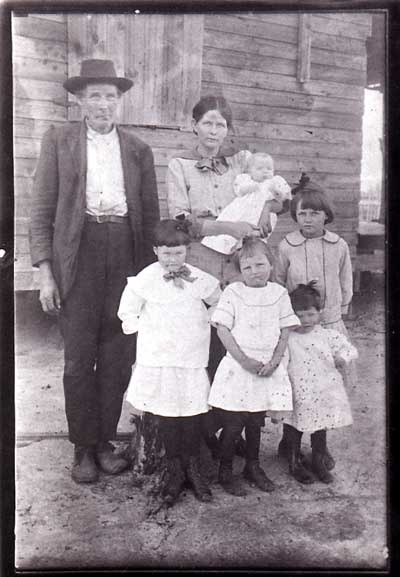
Photo of early settlers in the Blountstown, Florida area. (Click for larger view.)
The entire area was devoid of major population except for a small area around Quincy, Florida. A few settlers had moved there even before Florida was ceded back from the Spanish. Word soon spread that the hills of north Florida were indeed good land and the plantation period began.
But what about the southern lowland parts of the territory? The Indian wars brought many soldiers and camp followers into Florida. Some stayed, and some returned north. By the time of statehood in 1845, Florida had about 60,000 residents.
Given all that, it was the pioneer railroad development that began in the 1880's that actually triggered the settlement of Florida. By 1980, 100 years after the railroad, Florida had a population of 9.7 million, ranked 7th largest population of the 50 states, and had an average of 180.1 persons per square mile.
